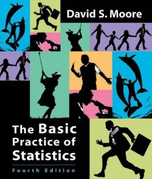A case for the Supreme Court. In 1986, a Texas jury found a black man guiltyof murder
Chapter 0, Problem 22.46(choose chapter or problem)
A case for the Supreme Court. In 1986, a Texas jury found a black man guiltyof murder. The prosecutors had used peremptory challenges to remove 10 of the11 blacks and 4 of the 31 whites in the pool from which the jury was chosen. Thelaw says that there must be a plausible reason (that is, a reason other than race)for different treatment of blacks and whites in the jury pool. When the casereached the Supreme Court 17 years later, the Court said that happenstance isunlikely to produce this disparity. They then went on to examine the statesclaim that the disparity was explained not by race but by attitudes toward thedeath penalty.17 Explain why the methods we know cant be safely used to do theinference that lies behind the Courts finding that chance is unlikely to produceso large a black-white difference.
Unfortunately, we don't have that question answered yet. But you can get it answered in just 5 hours by Logging in or Becoming a subscriber.
Becoming a subscriber
Or look for another answer
